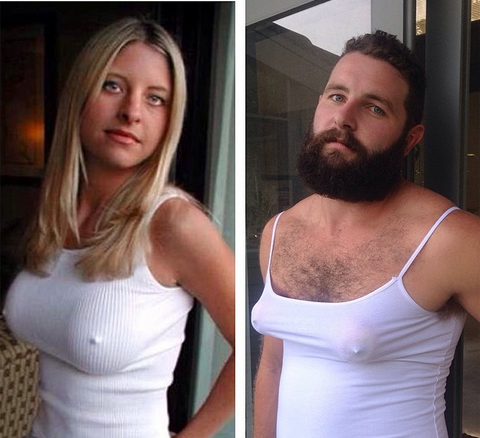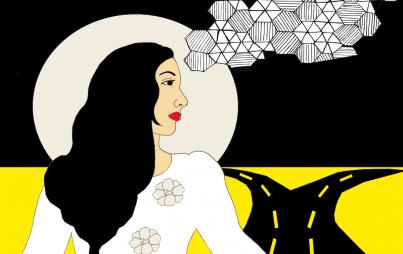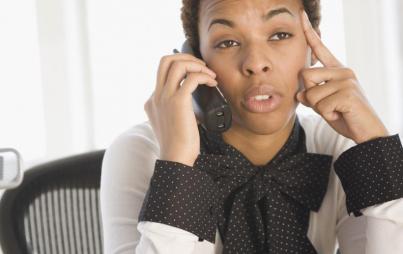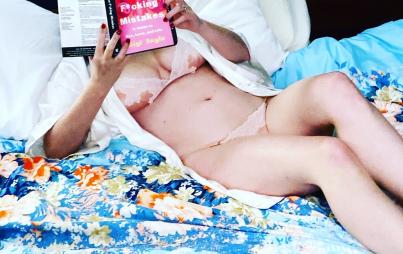
Courtesy of Tinderfella
A few months ago, the Australian comedy brother-duo, Bondi Hipsters, made splashes through the social stratosphere with their spoof on Miranda's Kerr's preposterously come-hither GQ cover, surfacing fraught-with-tension questions about power structures and sexuality, gender and the performance of gender, and whether the whole thing was clever social commentary or more misogynistic, ha-ha women are foolish sluts bullshit.
And now another bearded Aussie—say hello to Jarrod Allen—has picked up the cross-dressing torch and headed over to Tinder where he recreates women's profile pictures. Rumor has it it all began with this Tinder photo which Allen in turn posted on Facebook clad in electrical tape eyebrows:

The post promptly went viral and within the past few months, Allen has begun garnering thousands of followers who flock to his mocking Tinder mash-ups on Tindafella.
So here's where I have to come clean. Tinder—like so much of social media—exists in this strange realm of self-filtration and vigilantly curated "I." It's the presentation of a person that by definition is so self-conscious and strange and utterly inauthentic, it just begs to be derided. Just a few days ago I was lying in bed, biding my time with the glowing screen, as one does, and I started taking screen shots of some of the men that flashed by. Some of it was just too good—pure comedic gold. The unapologetic arrogance! The faux pout! The cerebral squint! The pounding of beer, not-my-baby, look at my deltoids, here's me with a buxom blonde, kitschy mustache, fuchsia filter, blur of joy and sailing and riding elephants sans pants bonanza. I imagined a matching game where you could try and pair up someone's choicest selfie with their self-description, the coupling of which, sometimes, was downright amazing in its dissonance.
I guess the point I'm getting at, is that as a woman—and a feminist—I find Allen's female reappropriations both provocative and, dare-I-say, hilarious. I realized he had actualized one of my own desires—bastard!—just from the male perspective.
But ah, therein lies the rub.

A bearded man coyly clutching an over-sized Christmas bulb clad in an ass-bearing romper (resplendent in dress socks!) is another visual altogether. Looking at a man in the exact same pose and clothing as a woman (if not intended to be the manifestation of a trans identity of course) becomes unsettling instead of arousing. And isn't so much of humor expecting one thing but getting another? With his portraits, Allen is cleverly perverting our power structures and sense of anticipation.
Our brains are hardwired to see leopard, under-butt, nipples or a coquettish giggle and think, woman. Why is it funny when people trip? Because their foot was supposed to land left right, left right but instead, they lurched forward and made a ghastly shocked face. It is in this gap, this break of the expected, that Allen's photos are so successful.
And when coupled with purposeful sexiness that so many women—and men—proffer on their dating profiles, it's the most beautiful car wreck I've seen in a while, calling into question our narcissism, self-presentation and gender relations in a kind of low-brow trifecta of cultural evisceration. (Whether or not Allen intends said commentary is another story altogether, it's become a beast of its own.)
This is not to say that some of his work isn't offensive (in particular his depiction of a dwarf is in very bad taste) but he is far from being the first: From Some Like It Hot (circa 1969), to Kids in the Hall and The Birdcage, men have been donning dresses to audience delight for decades. It seems we can't get enough.
Between the undeniable over-sexualization of women in just about every medium everywhere (from smut to world-adored starlets) and the pervasive divide of what it means to be a man or a woman, I think these sorts of projects—superficial as they seem at first glance—are helping to unearth a much-needed dialogue on why these side-by-sides turn our gears so much to begin with.
Whether or not these women "deserve" Allen's re-imagining of their photographs is another problem entirely, however. When publicly presenting yourself to the sometimes shining, sometimes sullied shores of social media, perhaps we've signed a blood-deal with the devil.
Like the celebrities we blithely scrutinize and celebrate, we've begun weaving our own public personal myths for people to delight in, devour and yes, deface.






